On December 5, 2022, Galerie Cécile Fakhoury debuted the solo exhibition “Ouattara Watts in Dakar,” marking the momentous third collaboration between the gallery and painter Ouattara Watts. In 2018, the artist’s large-scale exhibition “Before Looking at this Work, Listen to It,” was presented in Abidjan, Ivory Coast, followed by a solo show in 2019 at FIAC in Paris. For his current presentation in Dakar, Senegal, on view through March 11, Watts pays homage to the profoundly intellectual, magical, and musical city.
The Ivorian and American artist developed his newest series of paintings especially for the Senegalese exhibition, fusing his signature orange-pink hues with intense blues, moody grays, and dusty yellows, all echoing the dreamlike sub-Saharan landscape. Whether in sweeping murals or more intimate pieces, Watts explores the multi-faceted world of Dakar through thought-provoking collage, experimentation, and mixed metaphors. The frivolous, the cherished, and the mysterious all have their place in his complex creations.
Deeply inspired by the ebb and flow of the city’s ocean accompanied by jazz and afro-beat soundscapes, as well as his trademark enigmatic symbols, Watts’ paintings transcend time and space, developing a divine dialogue all their own. Whitewall had the opportunity to speak to Watts about movement, material, mathematics, and the poetics of humanity.
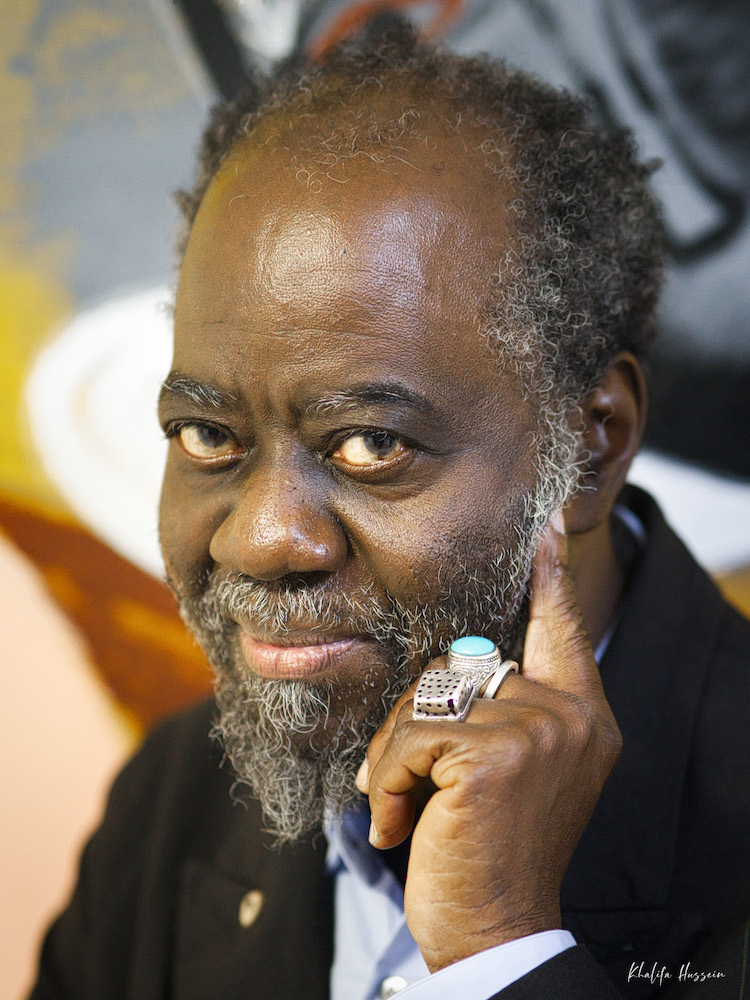
Photo by Khalifa Hussein, courtesy of the artist and Galerie Cécile Fakhoury.
WHITEWALL: How did Dakar inspire you for this series?
OUATTARA WATTS: I’ve always had a beautiful image of Dakar, I think I have in mind the Dakar of the 80s, full of music, clubs, and art. I love the mentality of the Senegalese, Senghor, the poet… When I was asked to do an exhibition here I immediately said yes!
WW: There is always a lot of movement in your paintings. Is it your love for music that shines through?
OW: Yes, the movement in my work is my relationship to music. I listen to a lot of it when I paint, from Beethoven to Bob Marley, via Jazz, Coltrane, and Miles Davis. As a tribute to my New York years when I often went to jazz clubs. Swing is very present in my paintings, these are the big splashes that you see in the first layers of the painting (in painting Intercessor #2, for example).
The different layers need a lot of drying time between each of them, that’s why I always work on several canvases at the same time, the material is essential for me.
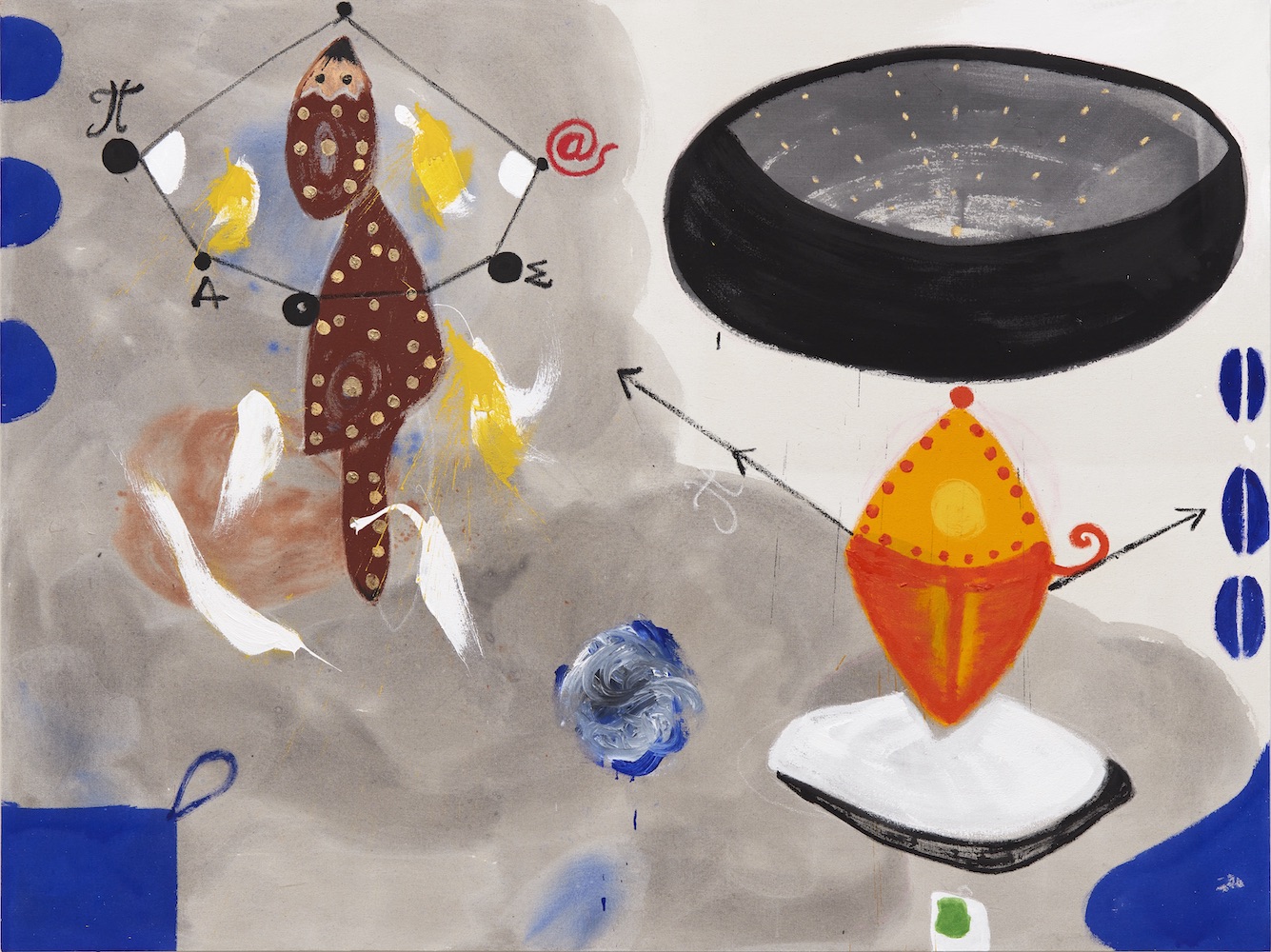
Ouattara Watts, “Intercessor #1,” 2022; courtesy of the artist and Galerie Cécile Fakhoury.
WW: The material is essential to you. And so are your colors—to the point of creating your own blue, the “Watts” blue.
OW: Yes, “Watts” blue is a blue that I make myself, which tends towards indigo. I used it a lot during my years in Paris, it was on almost all my paintings at the time. Today I come back to it, and I often associate it with the color of the earth.
I like to make my pigments, I try to produce them with a maximum of material, whether it is vegetable or industrial.
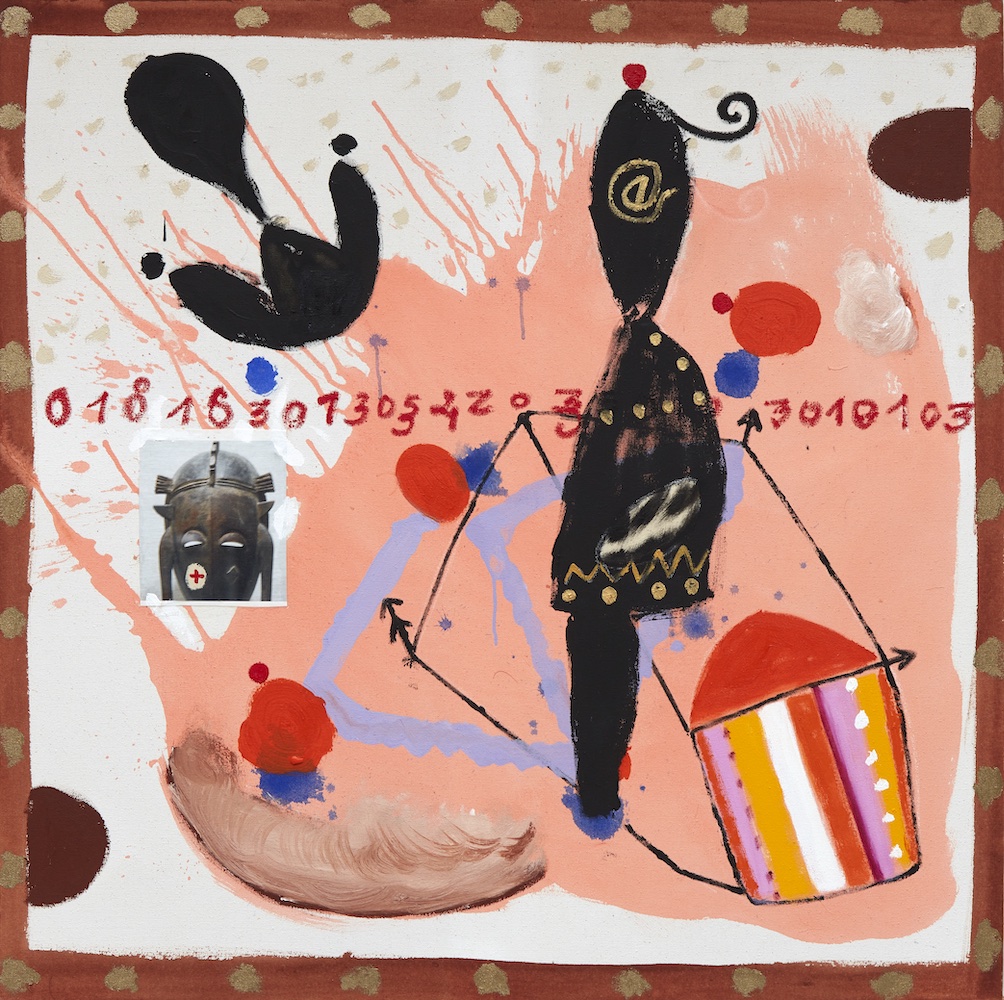
Ouattara Watts, “Intercessor #5”; courtesy of the artist and Galerie Cécile Fakhoury.
WW: You don’t find the same elements on your canvases as on your papers, do you want to make something different resonate when you change medium?
OW: I start with the big canvases and then move on to the smaller paper formats. Canvases make me think of something very grounded—like mountains, whereas paper is a much more fluid medium to me, a bit like the river. That’s why I use watercolor on paper.
Interchanging mediums allows me to make the energies flow. Painting on canvas is a very intense moment, and I really enjoy switching to watercolor afterward to let this energy flow and circulate.
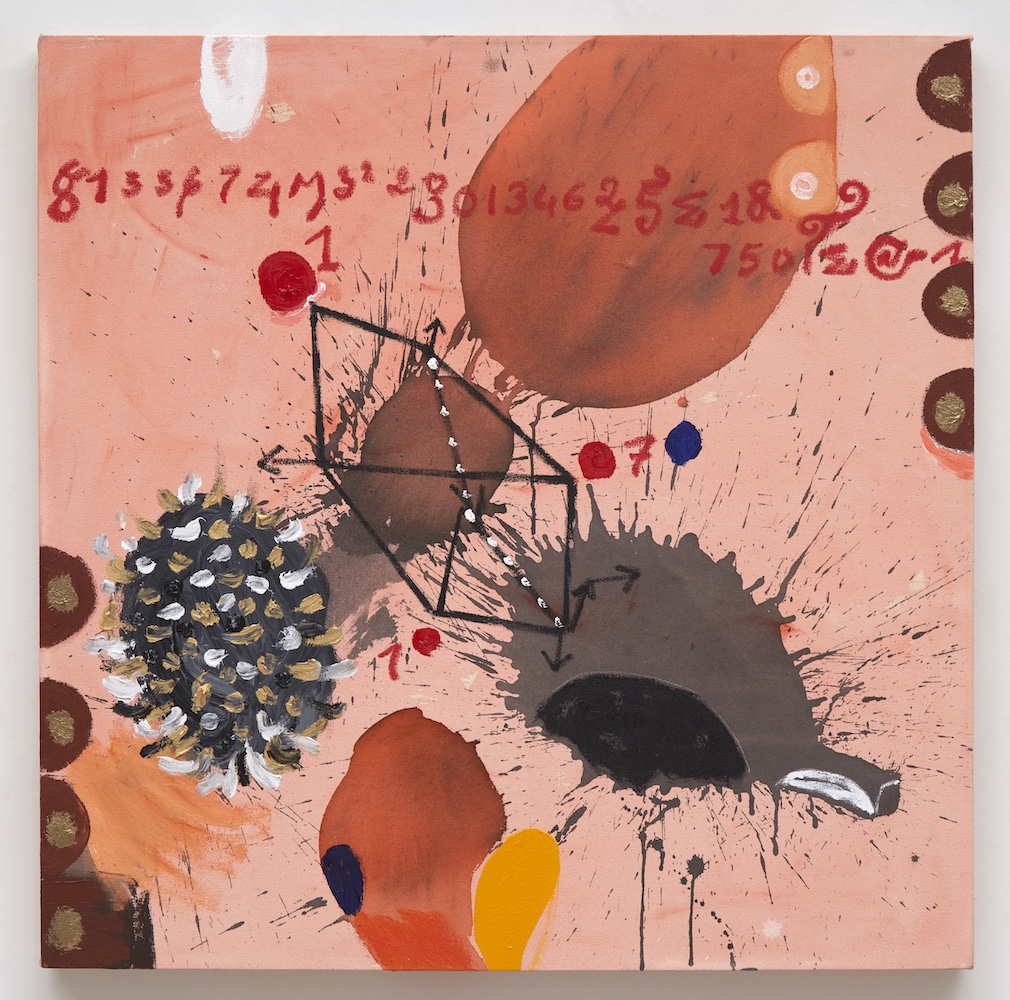
Ouattara Watts, “Intercessor #7”; courtesy of the artist and Galerie Cécile Fakhoury.
WW: Whatever the medium, we find a lot of symbols in your works: the Pi, the @, numbers and landmarks. Can you explain?
OW: These are universal, mathematical elements. You can talk about many things with mathematics. There are a lot of codes in my work, the numbers represent letters, I think that one day we will be able to decipher them. For the moment, I haven’t given all the keys to solve these equations [laughs]. But the numbers can represent a sentence, or a word. Once you have the alphabet of numbers, you will have it all figured out!
Not everyone has to like my work. But it bothers me when people walk by without questioning. There are multiple keys to reading my work.
WW: The mask often appears in your paintings, why?
OW: I have continued a series on masks, which I started during my exhibition in Rome. I worked on African, Greek, and Italian masks. I went to photograph Roman masks and armor at the MET for this work.
I find the masks to be very spiritual, and I love spending time at the MET, it’s as soothing as the music. There is something for every mood, for every period.
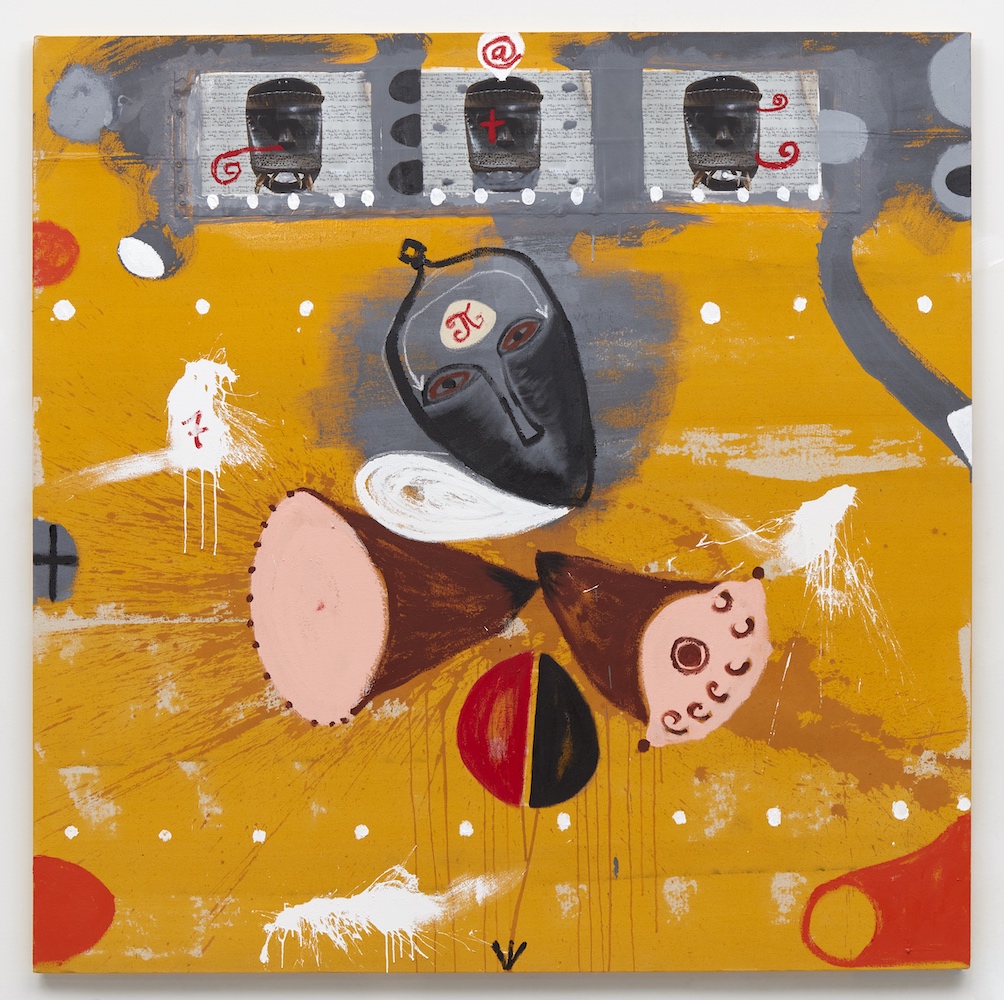
Ouattara Watts, “Intercessor #2”; courtesy of the artist and Galerie Cécile Fakhoury.
WW: What kind of spirituality inspires you? Are you religious?
OW: No, I’m not religious at all. When I talk about spirituality, I talk about people, their behavior, but not at all about religion. But there are Christian, Judaic, and African symbols in my paintings. I am inspired by poetry, Senghor’s, or more surrealist like André Breton.
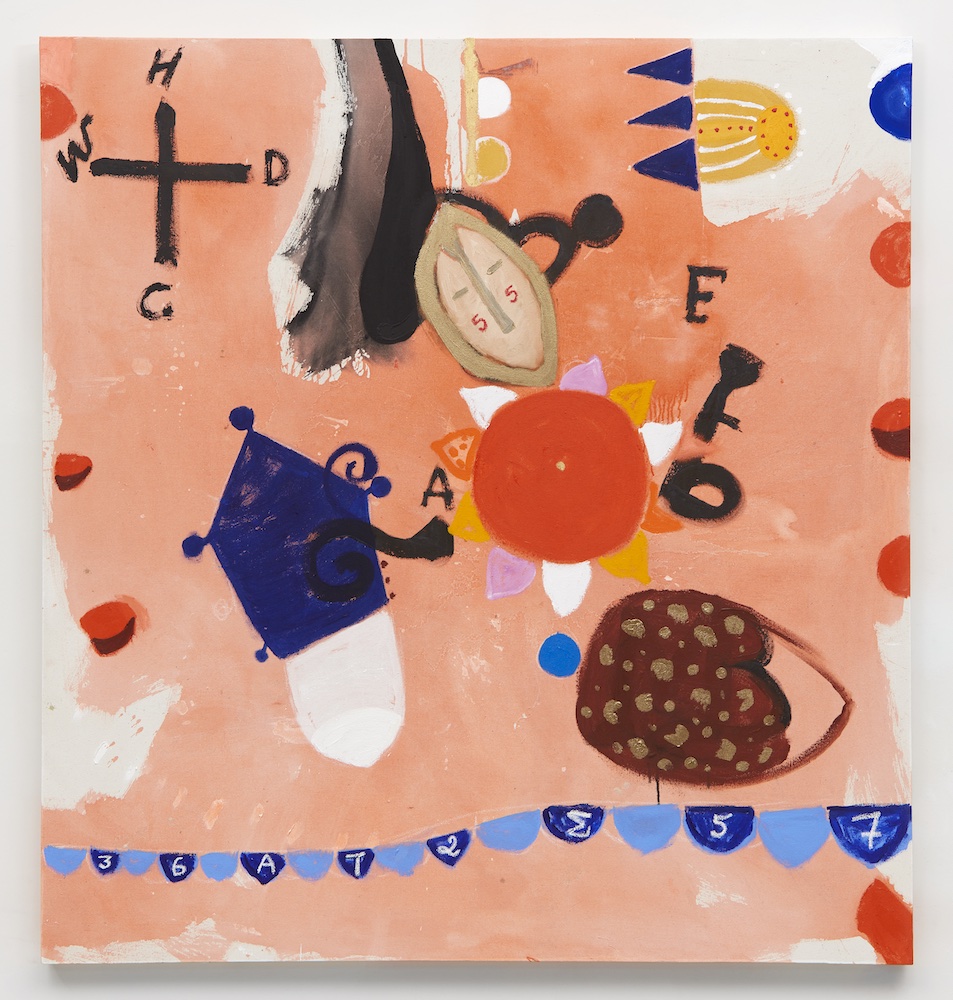
Ouattara Watts, “Intercessor #3,” 2022; courtesy of the artist and Galerie Cécile Fakhoury.
WW: You were close to Basquiat, who played a role in launching your career. How did you meet?
OW: It was an absolutely fantastic meeting, we shared the same curiosity. I had just graduated from the Beaux Arts, I was already involved in the Parisian art scene. I went to his vernissage and he bumped into me, he wanted to know what I was doing. I told him that we would have time for a studio visit later. He said no, I want to see it now. We left the gallery and went to my studio in the 18th arrondissement. He liked my work and we continued the evening until the early morning.
Then he convinced me to join him in New York. Driven by our common interest in African culture, philosophy, and spirituality, we traveled and worked together until his death in August 1988.
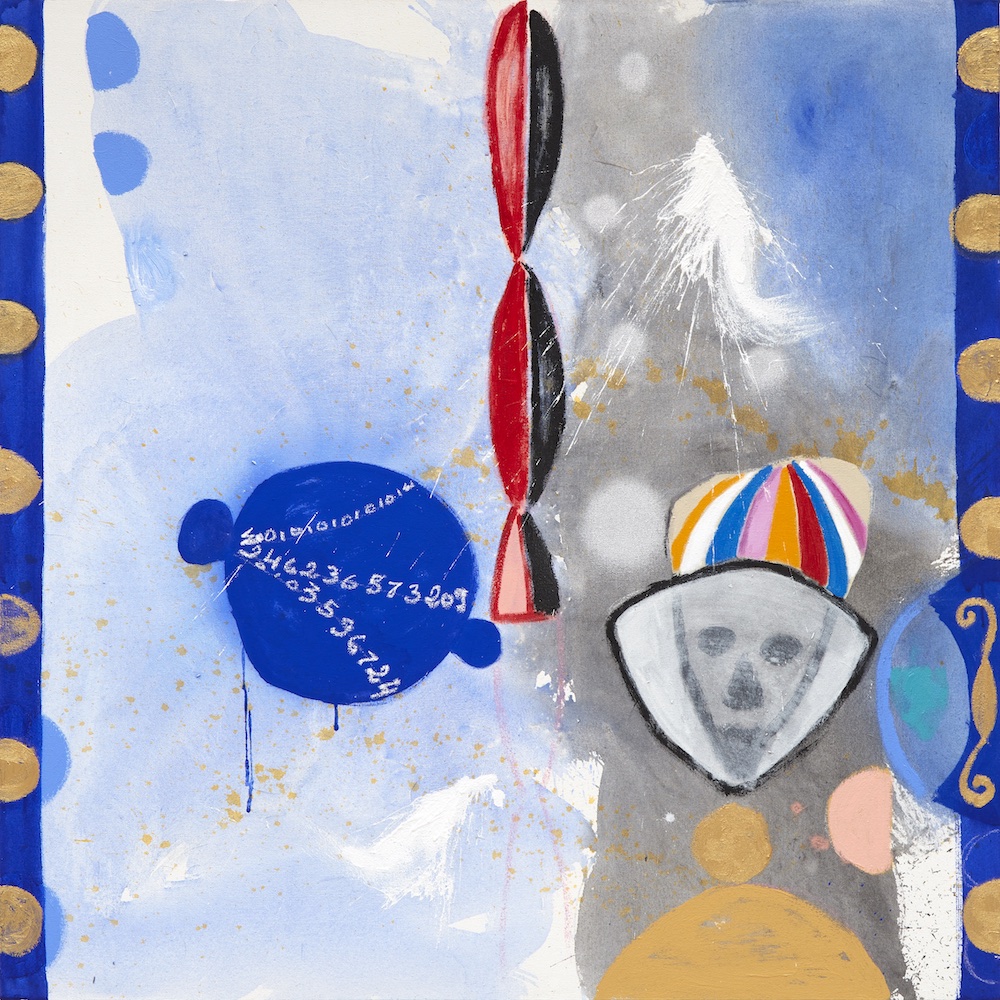
Ouattara Watts, “Intercessor #4”; courtesy of the artist and Galerie Cécile Fakhoury.
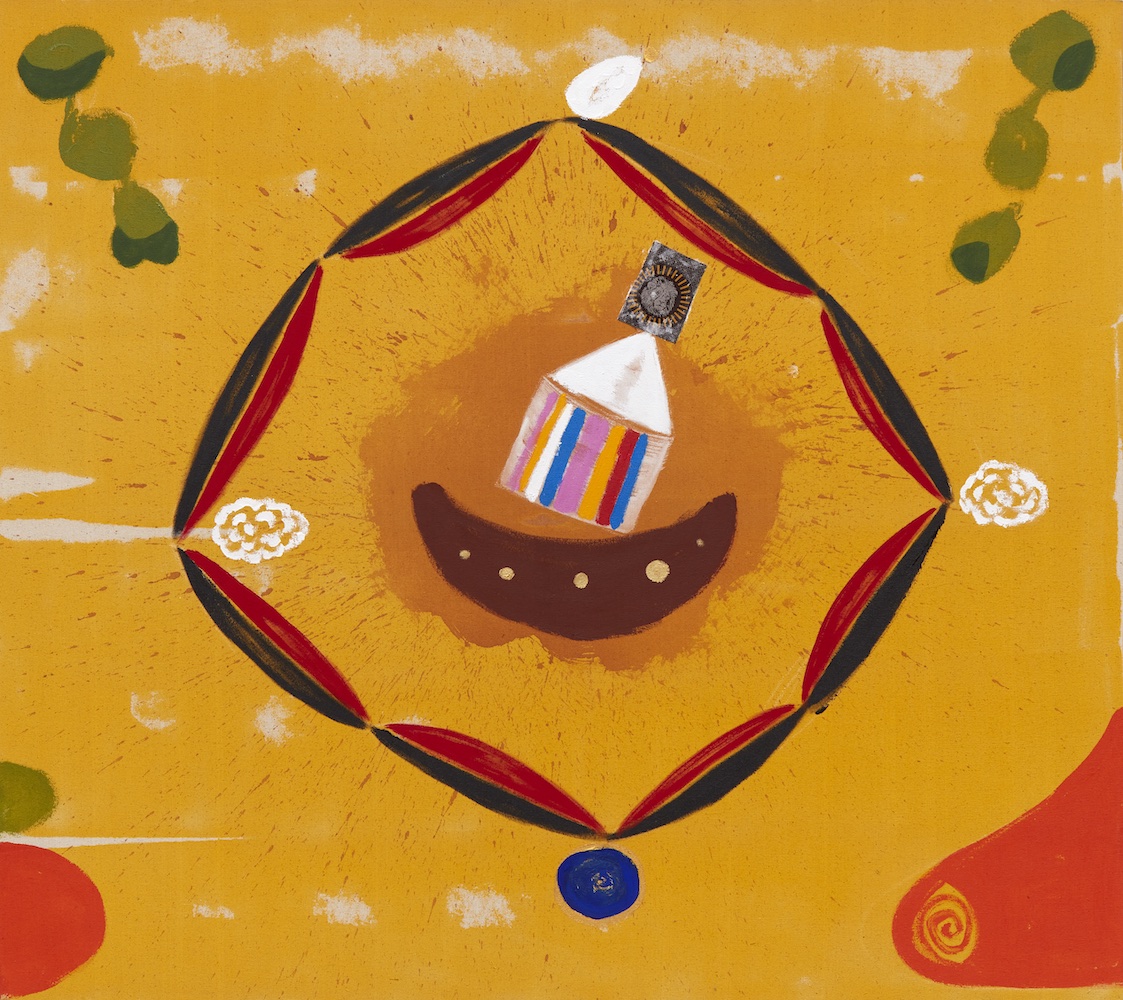
Ouattara Watts, “Travel in Space”; courtesy of the artist and Galerie Cécile Fakhoury.





